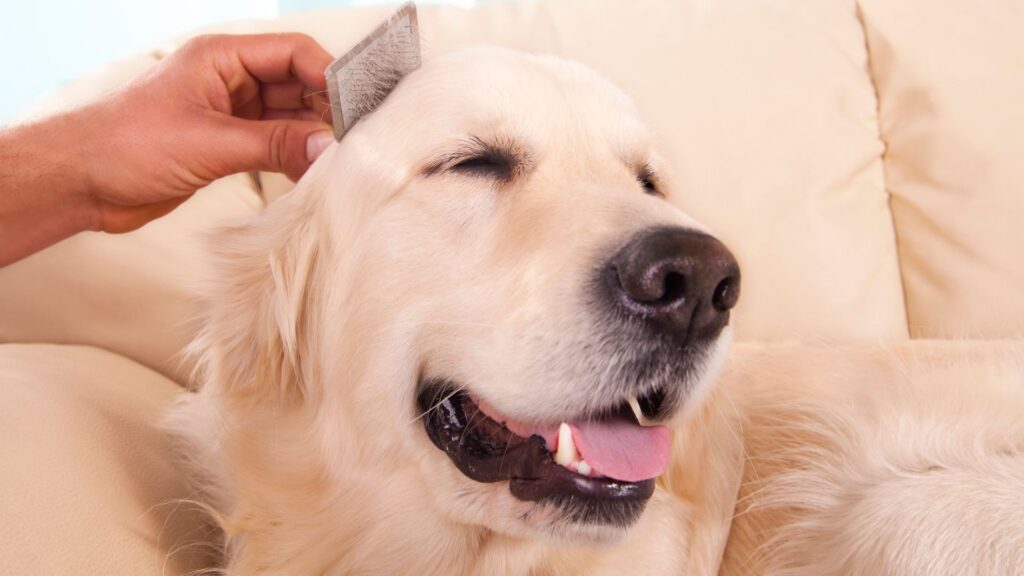
Love Is a Four-Legged Word with Furr
As unique as each dog is, so too is the care they require. Even if you believe it is unimportant, knowing your dog’s coat type will be helpful when you cut their hair, cleanse them, and so on. In addition, you will gain a better understanding of how your dog regulates their temperature and whether their coat requires additional protection.
A pet’s lustrous coat is an indication of its health and vitality. Pets with a dry, flaky, or unkempt coat may be suffering from thyroid disease, hyperadrenocorticism (Cushing’s disease), kidney or liver disease, or nutritional disorders. In fact, one of the primary ways your veterinarian evaluates your pet’s health is by examining its coat and epidermis.
In this article, Sirwiss-affiliated dog groomers will define and classify the various types of fur in order to help you locate one that matches your pet’s. Continue reading to discover the various types of dog fur and how to care for them.
Types of Dog Fur and How to Care for Them
Even if your dog never leaves the home, maintaining his grooming is essential. This is because their fur can continue to accumulate dirt, dust, and other allergens even inside the home. In addition to frequently brushing your dog’s fur and giving him regular baths, it is essential that you grasp the type of fur on your pet.
1. Wiry Coat

This fur variety is recognized when it reaches or exceeds 10 centimeters (4 inches) in length and exhibits a distinct thickness. When referring to a dog with a beard or large eyebrows, we sometimes use the term “wiry coat” to describe the dog’s fur, which has been preserved and groomed into a unique and distinguishing characteristic. Schnauzers and West Highland Terriers are examples of canines with this type of fur.
As new hair emerges, the old hair dries and becomes entangled in the animal’s thick fur. Your dog’s wiry coat will require daily grooming to remove dead hair. Some canines with a wire coat have two layers of hair: one that is wiry and coarse, and another that is shinier and smoother.
How to maintain a dog’s wiry coat:
In addition to daily brushing, the fur must be clipped with hair clippers that enable us to maintain a specific length typical of the breed, or by using stripping combs, which will cause the hair to grow even stronger and harder. To preserve the natural characteristics of the fur, choose a shampoo without lubricants or softeners. Every three to four weeks should suffice. A professional who has mastered the techniques of trimming and stripping should be consulted for a dog that competes in dog competitions.
2. Curly Coat
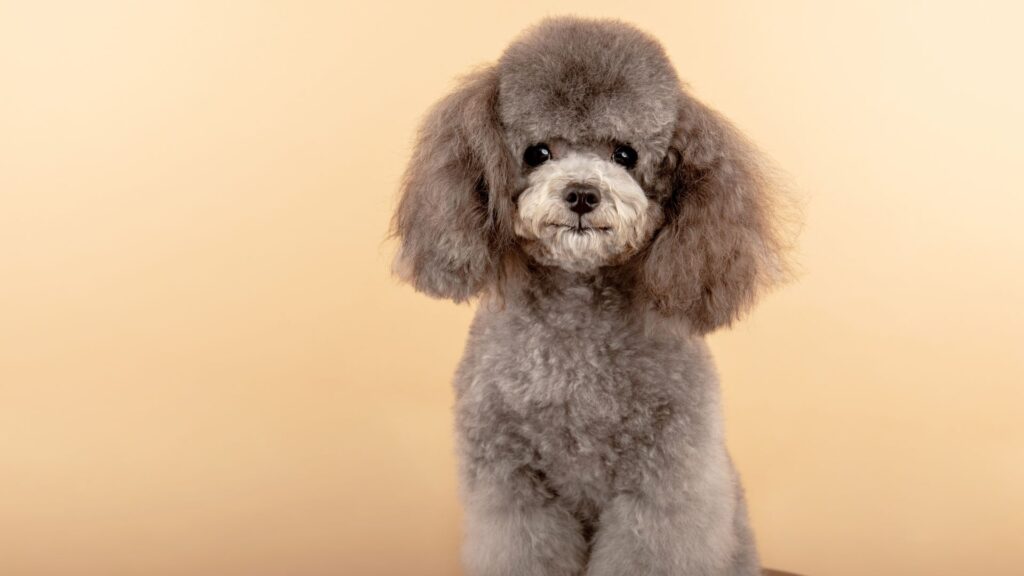
As a point of interest, we can note that curly hair develops continuously. Curly hair is extremely special and distinctive. This necessitates frequent trimming and grooming by those who are most familiar with this hair variety. Poodles, Spanish Water Dogs, and Kerry Blue Terriers are distinguished by their curly coats.
How to care for a dog with a curly coat:
A curly coat must be washed more frequently than other types of fur because it is more likely to become soiled; therefore, we advise washing it every 20 days or so. As this hair tends to become brittle, use a shampoo with added moisture. Ensure that the dog’s ears are protected and adequately dried during the bath. Avoid conditioners that reduce the volume of your hair. Complete drying is necessary.
A curly coat should be groomed daily, as any tangles that form will be extremely irritating for both the animal and us, as we will have to devote a great deal of time to removing them. In most cases, scissors should be used for trimming, while in others, clippers may be utilized. If you are inexperienced, you should observe the procedure and take notes at least the first time you visit a dog salon.
3. Short Coat

The length of a short fur is between 1 and 4 centimeters (0.04 and 1.60 inches). Numerous dog breeds, including the Pit Bull, Doberman, and Boxer, have this form of hair.
How to care for a dog with a short coat:
This type of dog fur is the easiest coat to care for and maintain. Bathe your dog regularly but not too often – once every month and a half – as otherwise you could damage the natural protective structures of the fur. Brush your dog’s short coat once or twice a week with a soft brush and pay special attention during the hair molting periods in spring and fall
4. Long Coat
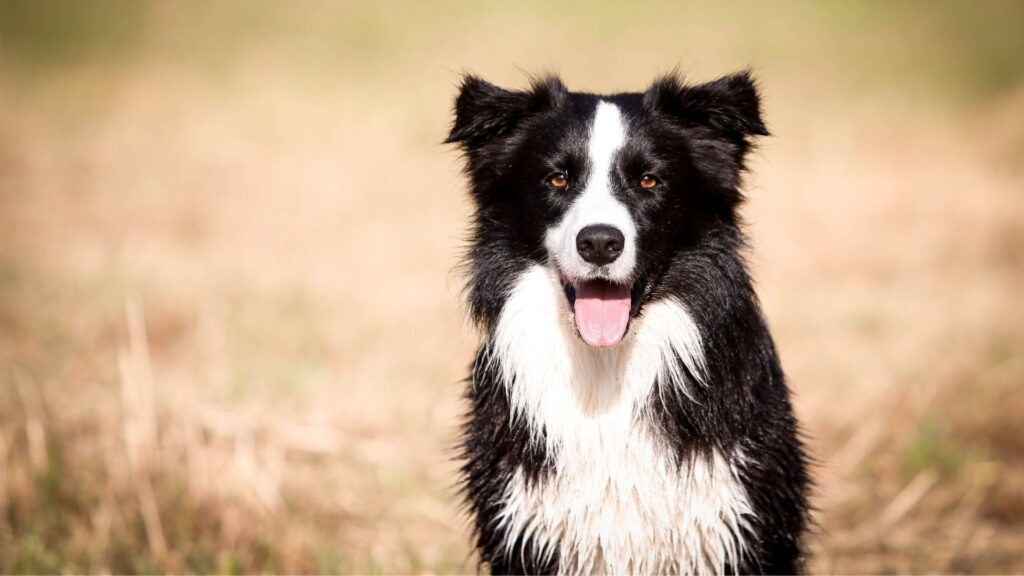
A long coat is easy to identify, obviously, because of its length. This group includes the Yorkshire Terrier, for example. Long fur shed continuously throughout the year, although in molting periods the fall intensifies.
How to care for a dog with a long coat:
To prevent tangling, this fur requires daily combing. If this occurs, we must remove the entire strand, as untangling it is typically challenging. As for bathing, once a month is sufficient to maintain the health and luster of your dog’s coat. Use a shampoo with a softener to prevent tangles and make the coat silky and sleek. When completed, dry the dog’s coat with a hair dryer, a hair clip or other hair accessory may be used, but care must be taken not to harm the animal. A lengthy garment should be trimmed with scissors. As is the case with curly hair, if you are not an expert in cutting, you should visit a dog salon to observe the proper technique and then attempt to replicate it at home.
How to Brush Your Dog’s Hair
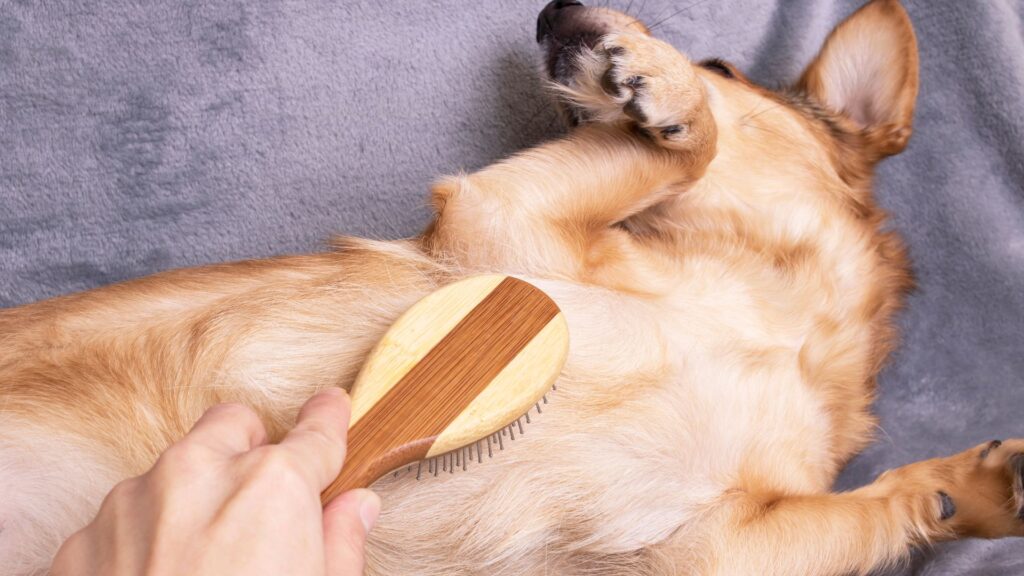
In contrast to cats, regular grooming and specifically brushing your dog’s hair is essential to their health, as it eliminates grime and the appearance of external parasites. However, you cannot simply use the first brush you come across in a store. The frequency and type of appropriate material for brushing your dog’s coat may vary based on its coat type.
1. Brush Your Dog Regularly
The primary purpose of combing the hair of a dog is to remove dead hair and skin cells. Therefore, incorporating a light daily brushing of 4-5 minutes is preferable to a comprehensive monthly brushing. Similar to flossing your teeth, it is more effective and easier to do it daily rather than once per month.
Aesthetics is the second cause for brushing a dog’s hair. Depending on the type, length, and general condition of your dog’s fur, the required brushing instrument and time will vary. Here are some straightforward tips to make brushing your dog’s coat a pleasant experience for both of you.
2. Choose the Right Product
It is important to massage a dog’s skin rather than scratch it when brushing its coat. The best way to ensure this is done correctly is to shop around for a suitable comb, brush, or card. Even if you invest in a high-priced hair tool, improper application might compromise the quality of your style. Even if you use a lot of pressure while brushing your dog, a low-cost plastic barbed brush with smooth, rounded ends will not cause any harm. Basic brushing with this type of brush is fine for any hair type and is adequate for brushing dogs with short hair if done frequently enough. Brushes made of natural bristles are versatile enough to be used on any sort of fur or hair because the bristles can be cut to different lengths and spaced apart in different designs.
The longer the hair coat, the more space between the bristles and the longer they should be. The bristles must also be firmer to effectively detangle tough hair. Wire brushes: pets with medium-to-long hair, as well as those with wavy or woolly coats, benefit most from using wire-pin brushes, which can have rubber tips on the pins. Slicker brushes, with their fine wire bristles, are ideal for untangling knotted or tangled hair.
3. How to Brush Short Haired Dogs
Short-haired dogs, such as Labrador retrievers and greyhounds, benefit from a gentle brushing in the direction of hair growth. The next step is to brush against the direction of hair development and massage the area vigorously to exfoliate and stimulate blood flow. Finally, brush in the direction of hair development once more for a flawlessly combed finish. A brush with soft to medium bristles is best for short, smooth coats. Brushes with stiffer bristles, such as a slicker brush, are best for dogs with short, wiry coats, like terriers.
4. How to Brush Long Haired Dogs
Brushing in the direction of hair growth is especially helpful for short-haired canines like Labrador retrievers and greyhounds. In order to exfoliate and increase blood flow, you should brush vigorously in the opposite direction of hair growth. To complete the perfect comb-out, brush again in the direction of hair growth. For short, smooth coats, a brush with soft to medium bristles works well. Dogs with short, wiry coats, such as terriers, benefit from using brushes with stiffer bristles, such as a slicker brush.
5. How to Brush Dogs with Curly Hair
A sharp comb can cause pain while combing a curly-coated dog like a Bichon Frise or Poodle. No dangerous points or edges should be present on the comb. If you have any knots that you just can’t get out with a comb, don’t be scared to cut them out. Once they’re all gone, brush against the hair’s normal growth direction very lightly to keep it from picking up static and temporarily losing its curl. After massaging the coat gently, brush it in the direction of hair development with the same brush and a smoothing comb.
Benefit of Brushing
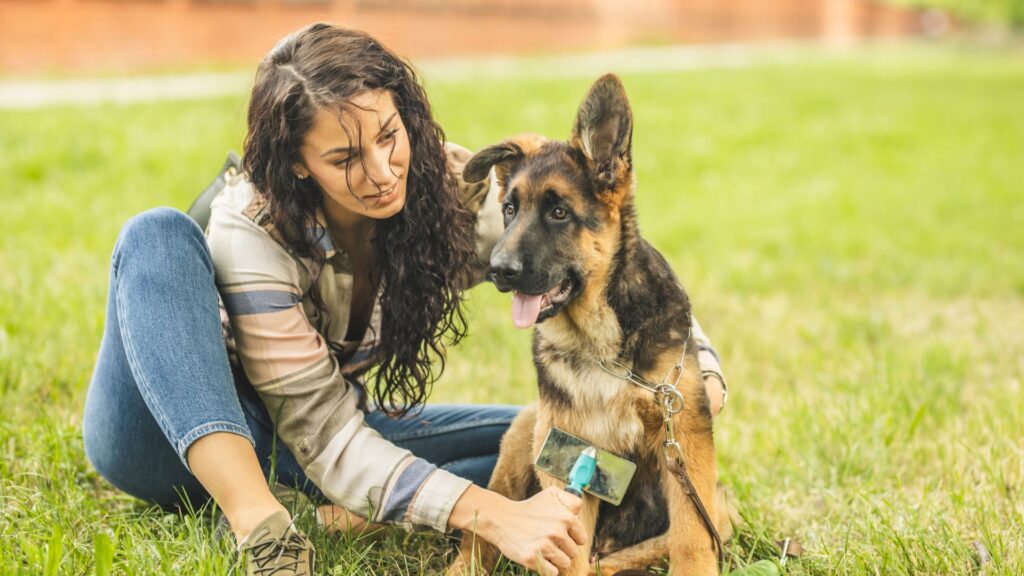
Maintaining your dog’s coat will enhance their health because you will be able to spot the existence of a parasite or wound promptly. Always be alert and inspect your dog’s coat on a frequent basis.
- Always brush in the direction of your dog’s natural hair growth. It can be uncomfortable for your dog if you pull the hair the opposite direction.
- Be gentle, treat your dog’s hair as you would your child’s.
- Ensure you remove all knots or tangles before brushing all over. Use a conditioner to smooth the tangle loose or use scissors and carefully remove the knot.
Bathing Your Dog
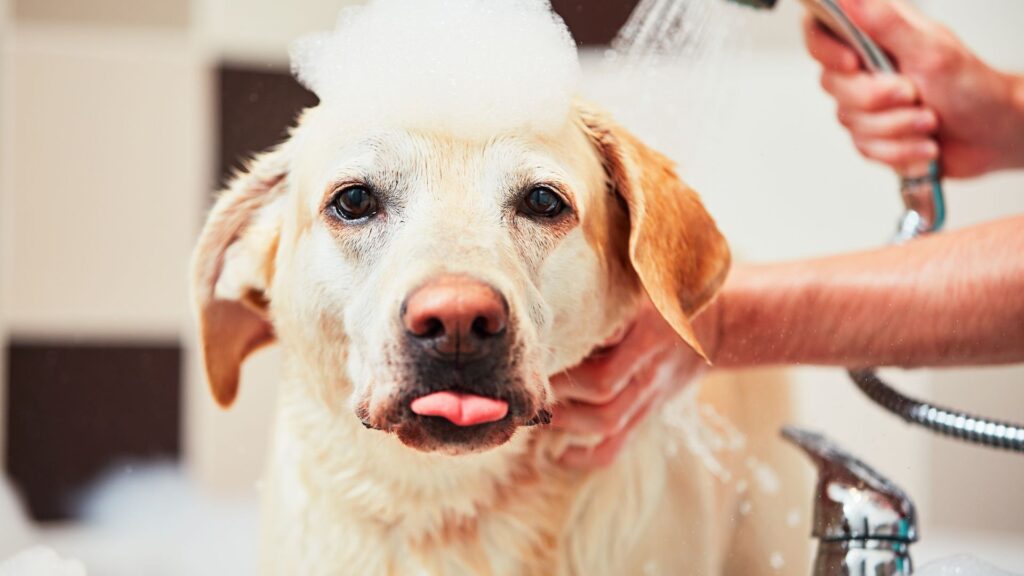
Bathing your dog is an absolute must as part of their grooming routine. As previously noted, regular showers can help maintain their fur healthy and free of dirt, dust, and allergens. However, because canine skin differs from human skin and can get exceedingly dry, you should use dog-specific shampoos. Over-bathing your dog, on the other hand, can cause skin damage such as dryness, inflammation, or infection. So don’t bathe them too frequently; once a month should plenty. You should also consult your veterinarian to determine what is best for your dog’s breed.
Feed Quality Food and Treat
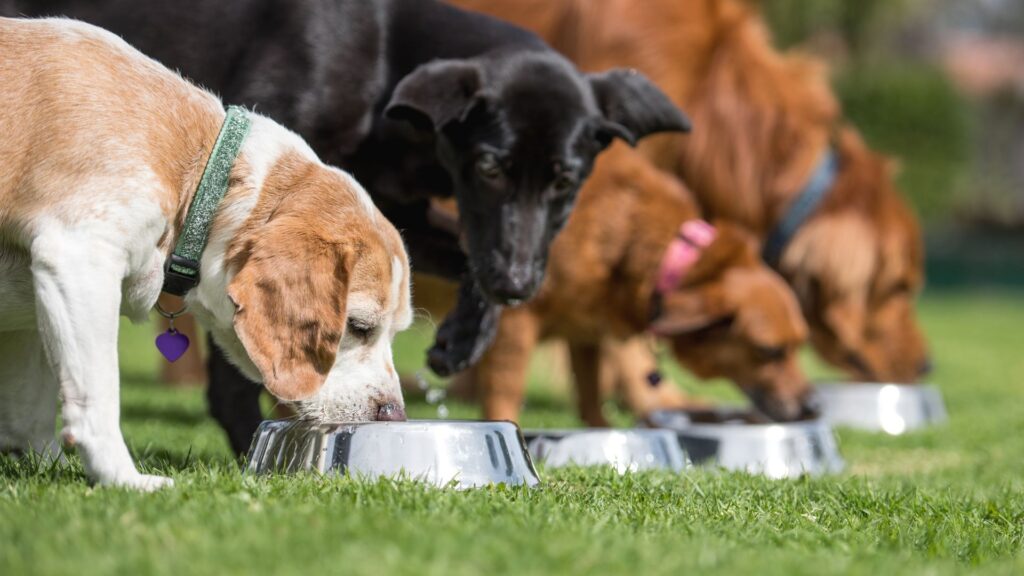
In addition to regular grooming with a brush and bath, feeding your dog a balanced diet is crucial for maintaining a healthy coat. In addition to keeping your dog’s weight in check, a nutritious diet and regular exercise will help keep your dog’s fur in pristine condition. If you want your dog to be healthy and full of life, you need to make sure its diet contains all the elements it requires.
Even though treats are just a snack for your dog, you can give them a leg up by using nutritious ingredients that promote healthy fur. Petaxin Omega Care, which contains 200 mg of omega-3 fatty acids in addition to biotin and zinc, is one of our favorite treats to give to your dog because it helps minimize shedding, dry, itchy skin, and general skin health.
Coconut Oil
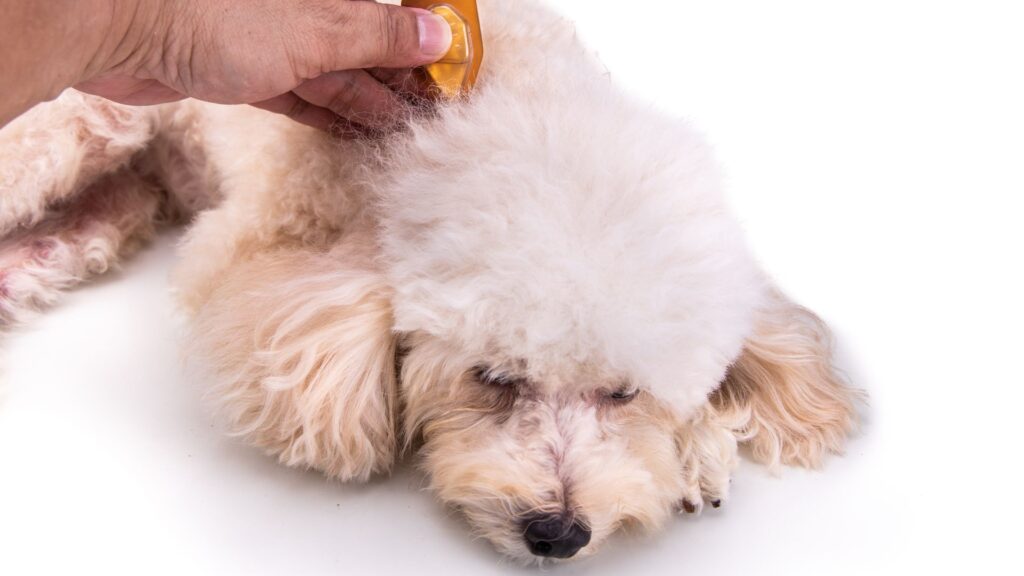
Coconut oil is fantastic for your dog’s coat, and you probably didn’t realize that. Because of its emollient properties, it can help keep dirt from sticking to your dog’s clear hairs after you’ve cleaned him. Another benefit of using coconut oil is that it dries quickly and won’t leave an oily film on your dog or the surfaces it touches. On top of that, coconut oil’s antimicrobial characteristics make it useful for treating skin problems. When you brush or bathe your dog, you might try using it on his fur.
Taking care of your dog’s fur has many more advantages than just keeping it looking good. The dust that settles on your dog’s fur as it lounges around the house can trigger allergy reactions if you don’t keep it clean. Initiate today a regular grooming schedule for your furry friend.